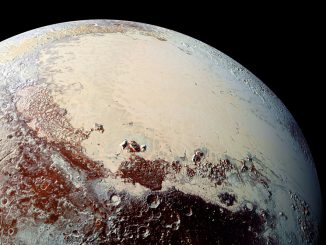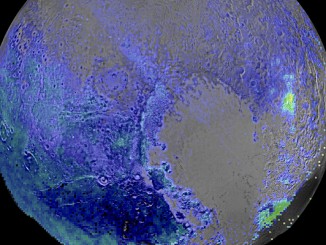Alan Stern, principal investigator for the New Horizon mission, reveals his biggest surprise so far as the probe closes in on Pluto. (Recorded 12 July 2015.)
Related Articles

New analysis supports subsurface ocean on Pluto
A liquid ocean lying deep beneath Pluto’s frozen surface is the best explanation for features revealed by NASA’s New Horizons spacecraft, according to a new analysis. The idea that Pluto has a subsurface ocean is not new, but the study provides the most detailed investigation yet of its likely role in the evolution of key features such as the vast, low-lying plain known as Sputnik Planitia (formerly Sputnik Planum).

Did Pluto’s moon Charon possess an ancient subsurface ocean?
This image from NASA’s New Horizons spacecraft focuses on a section of the informally named Serenity Chasma, part of a vast equatorial belt of chasms on Pluto’s largest moon, Charon. Scientists believe that Charon’s subsurface water-ice layer may have been partially liquid in its early history, and has since refrozen, expanded and pushed the surface outward, producing the massive chasms we see today.

New Horizons reveals Pluto’s widespread water ice
Data from NASA’s New Horizons spacecraft point to more prevalent water ice on Pluto’s surface than previously thought. Water ice is Pluto’s crustal “bedrock,” the canvas on which its more volatile ices paint their seasonally changing patterns. The new false-colour image is derived from observations in infrared light by the probe’s Ralph/Linear Etalon Imaging Spectral Array.
